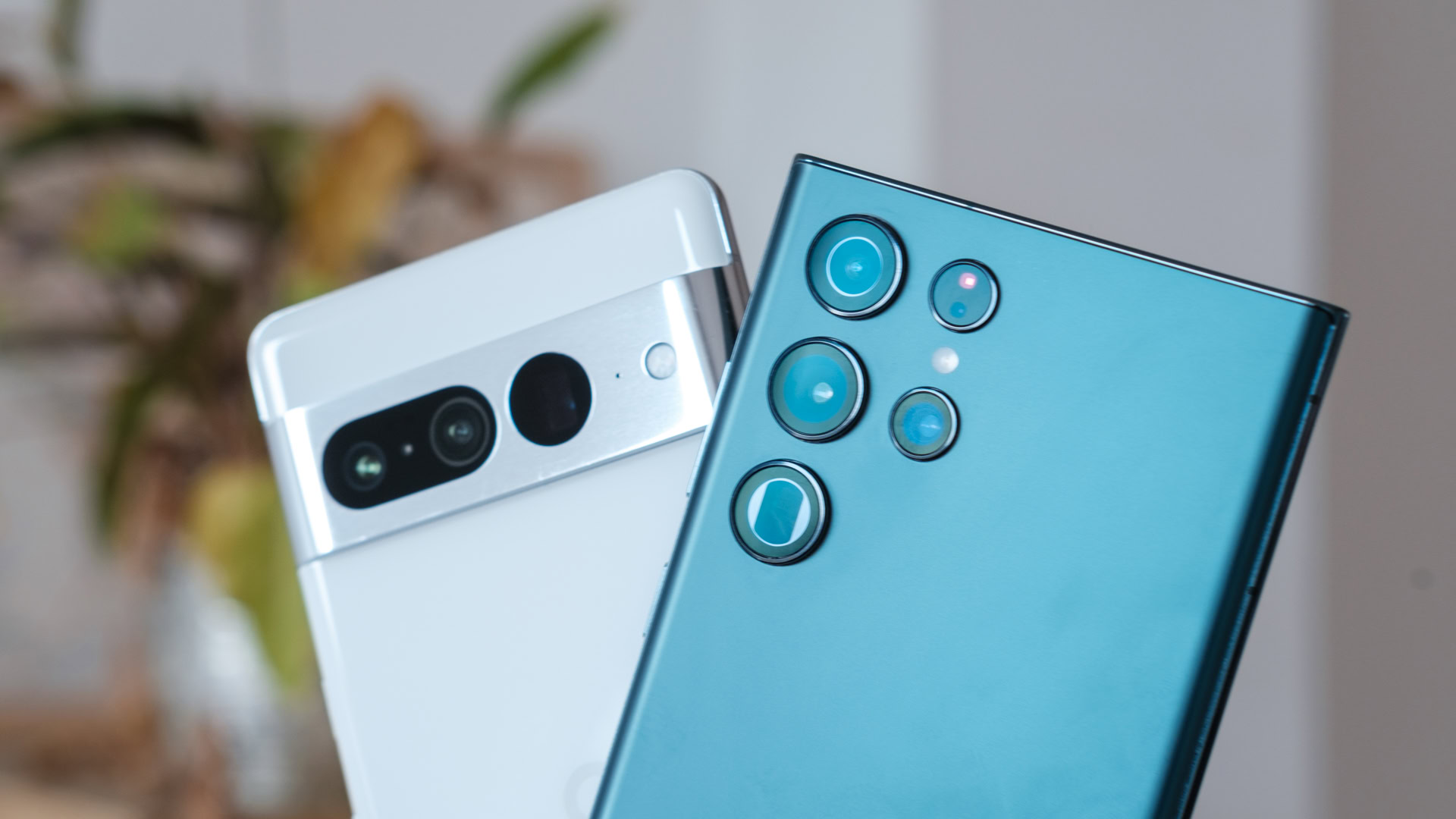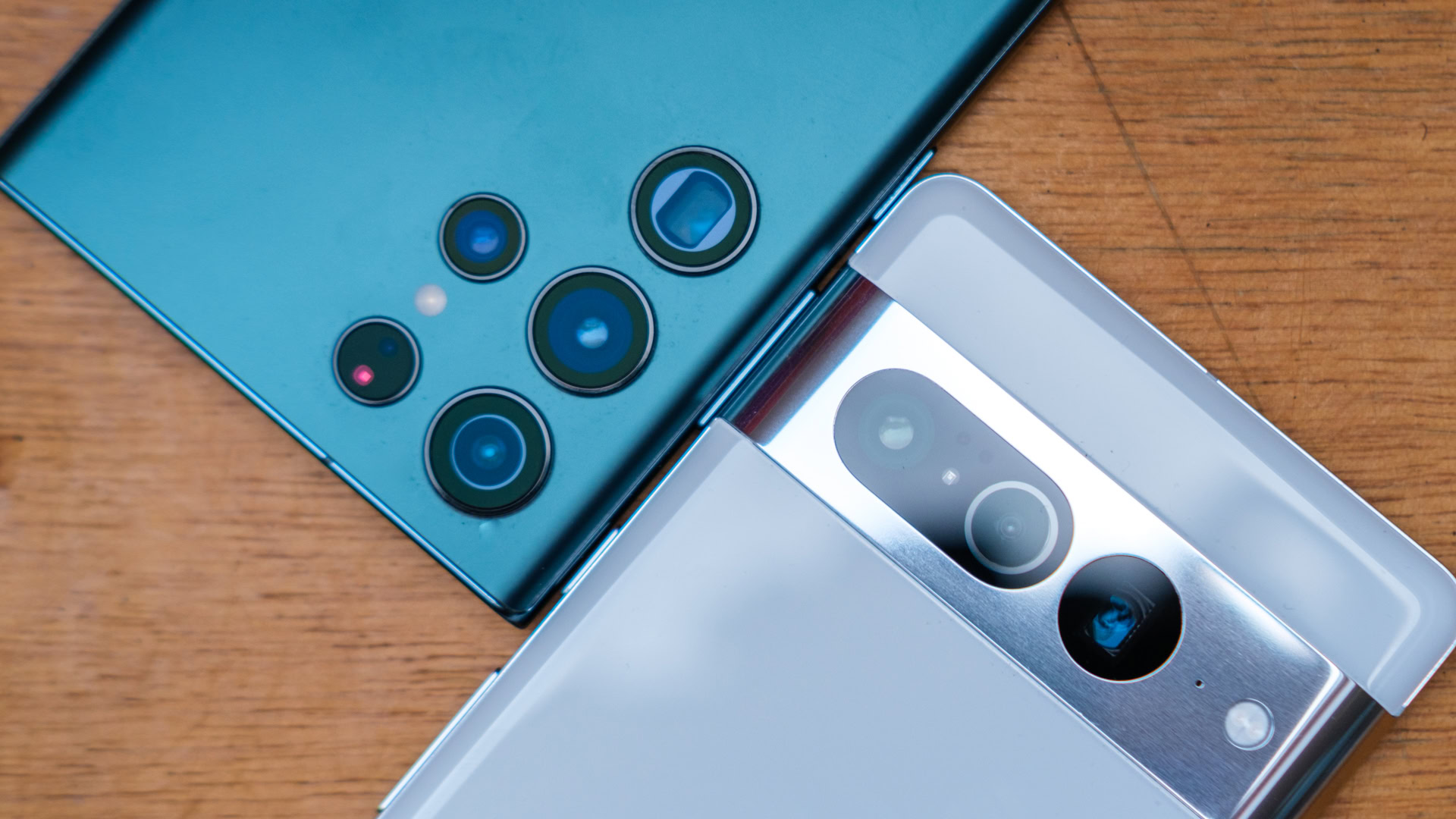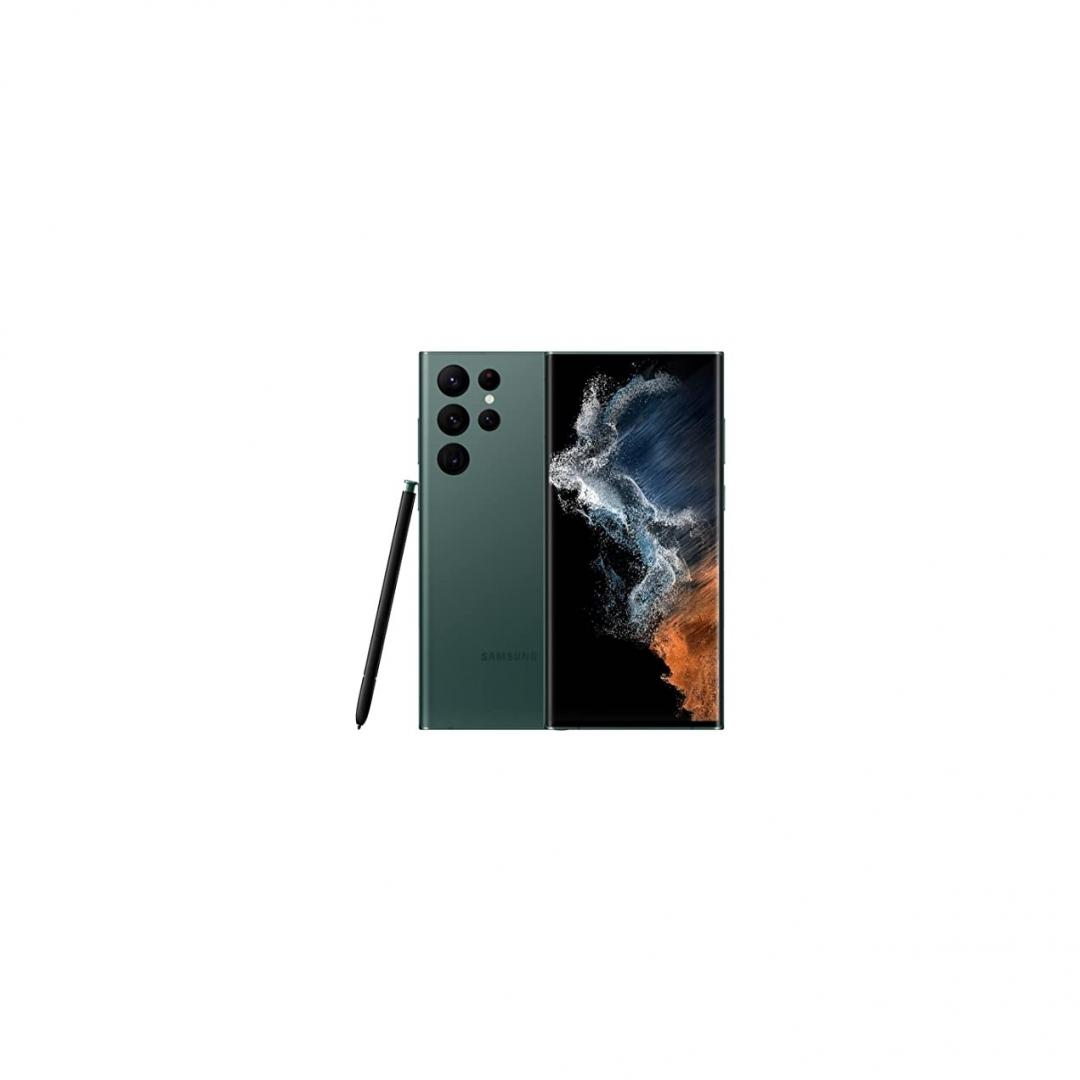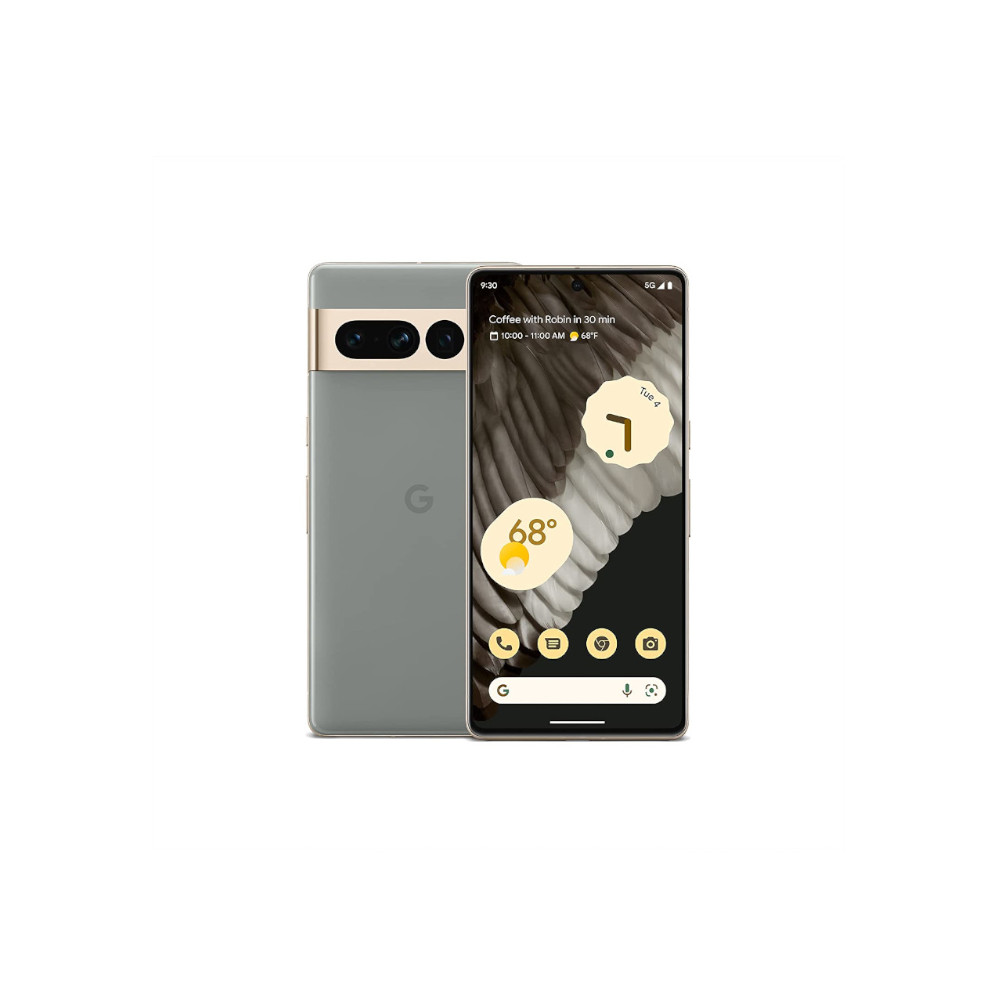Affiliate links on Android Authority may earn us a commission. Learn more.
Camera shootout: Google Pixel 7 Pro vs Samsung Galaxy S22 Ultra

Samsung’s Galaxy S22 Ultra has been our runaway top pick for the best smartphone camera of 2022. That was until the powerhouse Google Pixel 7 Pro came along. These are two very different camera packages, though, taking unique approaches to solve common mobile photography issues.
For starters, the Galaxy S22 Ultra packs a 108MP 1/1.33-inch primary sensor. That’s a higher resolution but actually slightly smaller than the Pixel 7 Pro’s 50MP 1/1.31-inch primary sensor. Both sport 12MP ultrawide snappers, but it’s here that Samsung takes the lead in terms of sensor size (1/2.55-inch vs 1/2.9-inch), though it has a slightly narrower field of view (120 vs 126 degrees).
Where our showdown will likely be most interesting is when it comes to zoom quality. Samsung sports two optical zoom cameras at 3x and 10x. Google opts for just a single 5x periscope camera and a combination of pixel cropping, sensor fusion, and machine learning upscaling to make up the difference.
Can AI smarts make up for the lack of dedicated hardware? Let’s find out in this Pixel 7 Pro vs Galaxy S22 Ultra camera test. You can view the full-res camera samples in this Google Drive Folder.
Pixel 7 Pro vs Galaxy S22 Ultra camera specs
| Google Pixel 7 Pro | Samsung Galaxy S22 Ultra | |
|---|---|---|
Main | Google Pixel 7 Pro 50MP (12.5MP output) 1/1.31-inch sensor ƒ/1.9 aperture Multi-directional PDAF OIS 25mm focal length | Samsung Galaxy S22 Ultra 108MP (12.5MP output) 1/1.33-inch sensor ƒ/2.2 aperture PDAF OIS 23mm focal length |
Ultrawide | Google Pixel 7 Pro 12MP 1/2.9-inch sensor ƒ/2.2 aperture AF 126-degree FoV 12mm focal length | Samsung Galaxy S22 Ultra 12MP 1/2.55-inch sensor ƒ/2.2 aperture Dual-pixel PDAF 120-degree FoV 13mm focal length |
Zoom 1 | Google Pixel 7 Pro 48MP (12MP output) 1/2.55-inch sensor ƒ/3.5 aperture Multi-directional PDAF OIS 5x optical zoom (120mm) | Samsung Galaxy S22 Ultra 10MP 1/3.52-inch sensor ƒ/2.4 aperture Dual-pixel PDAF OIS 3x optical zoom (70mm) |
Zoom 2 | Google Pixel 7 Pro N/A | Samsung Galaxy S22 Ultra 48MP (12MP output) 1/3.52-inch sensor ƒ/4.9 aperture Dual-pixel PDAF OIS 10x optical zoom (230mm) |
Laser AF | Google Pixel 7 Pro Yes | Samsung Galaxy S22 Ultra Yes |
Selfie | Google Pixel 7 Pro 10.8MP 1/3.1-inch sensor ƒ/2.2 aperture | Samsung Galaxy S22 Ultra 40MP (10MP output) 1/2.82-inch sensor ƒ/2.2 aperture PDAF |
Main camera
As you’d expect from two of the most renowned brands in the business, these two phones take great-looking snaps virtually every time. There are, however, some subtle differences between the handsets that are worth highlighting.
As has historically been the case, Samsung’s pictures drip with heavy saturation, which leads to much punchier but less realistic pictures — at least in some instances. I’ve noticed this much more with warm images filled with reds and oranges than I have with cooler scenes. See the second batch of four comparisons below, where there’s less of a difference between the two than there is in the shots above. Though even then, the Galaxy S22 Ultra is still the punchier handset.
The Galaxy S22 Ultra isn't always punchier, but it's stark when it dials up the saturation.
Before moving on, I want to highlight that the images above (the pumpkins and leaves) were captured using the Pixel 7 Pro’s macro mode and with the S22 Ultra’s focus assist enabled. Both modes ensure the phones keep most of the subject in focus and provide much more detail than leaving the mode off. At least when you’re this close to the subject.
The Pixel 7 Pro takes an early lead for color realism, but I wouldn’t say that the Galaxy S22 Ultra is particularly bad here. Instead, the high level of saturation is primarily noticeable when placed side by side with a more subdued image. As you can also see from the gallery above, the Galaxy S22 Ultra is a bit more dynamic with its white balance, opting for cooler and warmer tones depending on the scenes. Let’s move on to fine detail next.
There’s not a huge amount between these two with a semi-nearby subject. There’s clear processing on both; the Galaxy S22 is a fraction heavier on the sharpening pass, which results in some messy tree textures. Meanwhile, the Pixel 7 Pro is softer but opts for a stronger contrast resulting in darker shadows and harder edges. I marginally prefer Samsung’s look, but both provide plenty of detail for cropping this type of image.
We can see a bigger difference in detail capture with a more distant shot. The Pixel 7 Pro is noisier here — Google’s denoise and sharpening algorithm completely fails to extract any detail from the grassy field. The Galaxy S22 Ultra is far too sharp but provides very distant details and textures that hold up better when pixel-peeping. When it comes to cropping and editing your pictures, Samsung’s flagship has a fraction more detail to work with in some instances, at least where the main rear camera is concerned.
Pixel 7 Pro vs Galaxy S22 Ultra: HDR and low light
There’s a surprising similarity in the HDR capabilities of these two phones. The two main cameras extract plenty of highlight and shadow detail in the tricky scenes above, even when shooting toward the sun. There’s no sign of a blown-out highlight or crushed blacks. We’ll give the nudge to the Pixel 7 Pro, which extracts a fraction more color and detail in the darkest parts of our scenes.
We can also spot a key white balance difference in these shots too. Samsung’s Galaxy S22 Ultra prefers cooler tones, while the Pixel 7 Pro opts for a warmer palette, resulting in slightly too yellow grass. On the cold UK day these were shot on, it’s Samsung’s choice that is the more realistic.
Low light photography is the other side of the HDR coin, so we turned down the lights and enabled night modes for the following shots.
Both phones opted for the same exposure time here, with two seconds for the first shot and three for the second. There’s no doubt that the Pixel does better when it comes to white balance, with the Galaxy handset coming in a bit warm even for the limited indoor lighting. The roles are seemingly flipped from the earlier HDR shots. While the Galaxy S22 Ultra produces a slightly brighter exposure and more colorful image, it’s a bit over the top for the limited lighting. The Pixel looks a little washed out, by comparison, with the idea shot probably somewhere between the two. Pixel-peeping further, you’ll spot a lot more detail in the map image, while the Pixel 7 Pro is a smudgy mess that can’t resolve the text. Clearly, both phones have their own pros and cons in very low light.
Overall, these handsets handle tricky HDR and extreme low-light environments very well. Google’s Pixel 7 Pro does marginally better at exposure in HDR environments, but the S22 Ultra seemingly holds up a little better when looking at fine details in low light.
Ultrawide
There’s similar image quality on offer with the ultrawide cameras. Both sport solid colors, exposure, and HDR capabilities. Google’s Pixel 7 Pro gives a broader step back with its ultrawide, moving from a 25mm focal length to 12mm for a 126-degree field of view. The Galaxy S22 Ultra’s primary camera is already quite wide with a 23mm focal length, so the step back doesn’t feel quite as pronounced. Although with a 120-degree field of view, there’s not an awful lot of difference in it, in terms of what you can fit in.
Again, Samsung’s camera offers more punch in the color department as well as a cooler white balance. The Pixel 7 Pro’s first snap above looks a little flat and doesn’t quite have the dynamic range of Samsung’s shots. Note the slight increase in highlight clipping. The second shot is also less punchy but arguably a bit more realistic for an overcast day. But once again, the two are more alike than different when looking at the full frame.
Ultrawide cameras can introduce unique issues, though. Distortion is most often spotted at the edge of an ultrawide camera shot, so let’s take a closer look here.
In this snap, the Pixel 7 Pro looks much cleaner, with minimal signs of chromatic aberration, and though there isn’t a lot of detail, the lens seems mostly free from warping and image distortion as well. By comparison, the Galaxy S22 Ultra suffers from a large amount of blurring and purple fringing, but it does hold up a little better in terms of color and noise. Combined with a broader field of view, chalk this up as a win for the Pixel in terms of distortion, but the Galaxy has a marginally better dynamic range.
Zoom
With a 5x optical zoom camera onboard, you might assume that the Pixel 7 Pro is rather limited in its zoom application, but that’s not the case. The phone holds up competitively against the Galaxy S22 Ultra’s 3x and 10x duo zoom camera setup thanks to Google’s use of Super Res Zoom, sensor cropping, and image fusion technologies. Looking at the 3x example, for instance, there’s a solid level of detail that actually exceeds the Ultra’s optical zoom quality when looking at a 100% crop. It’s no contest at 5x either; the Pixel 7 Pro’s zoom quality is far superior in terms of detail, thanks to its use of an optical zoom lens.
That said, the Pixel is more washed out looking once switching to the 5x optical zoom camera, while the S22 Ultra applies more similar levels of color and saturation across its zoom range. At 10x, the Galaxy S22 Ultra takes the lead in terms of detail. The phone’s periscope zoom works better than Google’s crop and upscale approach, even though the Pixel 7 Pro’s results are still very usable at this range. It’s a pretty close run beyond 10x, with the S22 Ultra marginally keeping its nose out in front at 15x in this example. However, neither setup holds out particularly well at 30x, with smudged details overtaking both scenes.
Before leaving these snaps behind, I want to highlight the additional detail the Pixel 7 Pro manages to pull out at 3x, despite the lack of optical hardware. It completely eclipses the Galaxy S22 Ultra, which uses a dedicated 3x telephoto camera here. The trick is that Google’s machine learning upscaling uses detail data from the 5x camera as well, to enhance details near the frame’s center.
However, Google’s method is not without its caveats. The company uses detail from the 5x periscope camera to improve quality in the center of the image. This means there’s a noticeable drop-off in quality towards the edge of the frame. Notice the muddier textures and lack of sharpness on the left-hand side compared to the right of the picture below. Just follow the fence along from right to left, and you can see where the resolution suddenly falls away. The S22 Ultra, by comparison, is much more consistent across the entire scene, such as when looking at the legibility of the text. You have to crop in to notice it, but the trade-off is there.
The Pixel 7 Pro's image fusion produces mixed results if you're looking at the middle or edge of a frame.
Finally, let’s take a look at the subtle detail differences at 10x. This highlights just how far above its weight the Pixel 7 Pro can punch.
Although the Galaxy S22 Ultra is sharper here, it’s certainly not a noticeable difference until we turn to a 100% crop. Even here, we could argue that Samsung’s handset is a little too strong on the post-processing and is a little noisy. Still, the 10x periscope camera holds up a little better than the Pixel’s crop technique, which we would expect. But there’s really not a huge amount in it.
Pixel 7 Pro vs Galaxy S22 Ultra: Selfies and portraits
Let’s dive right into some mugshots. Edge detection for bokeh blur is generally good to great on both these phones, though they are tripped up by complex backgrounds, such as our outdoor snaps, and loose hairs. Personally, I prefer Samsung’s heavier use of bokeh and natural-looking light circles, but both let you dial in the amount post-shot, so this isn’t such an issue.
For all Google’s talk on Real Tone, I’m still perpetually disappointed by the handset’s overly warm skin tones and sharp textures. The selfie camera also fails to even out facial exposure, resulting in unsightly dark spots around the eyes. The Galaxy S22 Ultra’s tones and textures aren’t perfect either. Still, they’re more realistic overall, and the camera does a better job exposing facial features, which is precisely what you want when shooting selfies. It’s a similar state of affairs when shooting portraits with the rear camera as well.
Again the Pixel 7 Pro underexposes facial features while the Galaxy S22 Ultra provides a more even exposure across the face. Similarly, the Pixel 7 Pro’s details are overly sharp, particularly on the indoor shot. We see a tint to the warmer side with skin tones as well. Not great, unless you really love punchy colors.
Samsung’s indoor portrait is better overall, but the details are too soft. Neither phone handles the warm sunrise lighting particularly well, with both phones tinting skin tones too orange. Again, the Galaxy S22 Ultra is too soft on the fine details in the outdoor portrait. Regardless, it benefits from a more realistic face shape owing to its 70mm, 3x telephoto lens for portraits.
Pixel 7 Pro vs Galaxy S22 Ultra camera shootout: The verdict

As you might expect from two of the most highly regarded brands in the business, both the Google Pixel 7 Pro and Samsung Galaxy S22 Ultra take phenomenal snaps in virtually all conditions. To decide which is better ultimately depends on the scenario… and a lot of nitpicking.
For me, the Pixel 7 Pro finally competes with the best in the business across main, ultrawide, and zoom capabilities. The phone’s hardware and software upgrades have closed most of the remaining gaps — ones that had already gotten pretty tight with the Pixel 6 Pro. Google’s Super Res Zoom is particularly impressive right across ranges from 2x to 10x, even though image quality at the very edges of the frame doesn’t always hold up. Those that prefer more muted, realistic colors, will also prefer Google’s handset.
Google's Pixel 7 Pro is highly competitive, and it's cheaper to boot.
Samsung’s Galaxy S22 Ultra wins out in a few areas, though. Its main sensor provides more detail in tricky environments, both light and dark, and it’s a marginally better shooter at 10x. I also like Samsung’s cooler color balance in a number of the snaps. While overly soft, I also prefer the phone’s palette and exposure for portraits and selfies over the Pixel’s rougher approach.
Perhaps the most important point comes down to the price. The Pixel 7 Pro remains highly competitive with and, in some instances, exceeds the capabilities of the Galaxy S22 Ultra. Yet it does all this at a fraction of the cost — just $899 against the Galaxy S22 Ultra’s $1,199 MSRP. For that reason, it’s a phone we can really recommend to all photography enthusiasts. Especially those with a sub-$1,000 budget in mind.

Gorgeous screen
Solid performance

High-quality display
Big battery